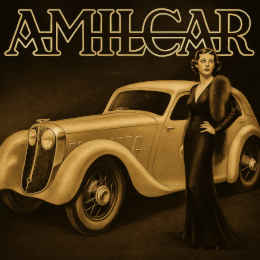Citroën DS 1968 Motoring Brochure
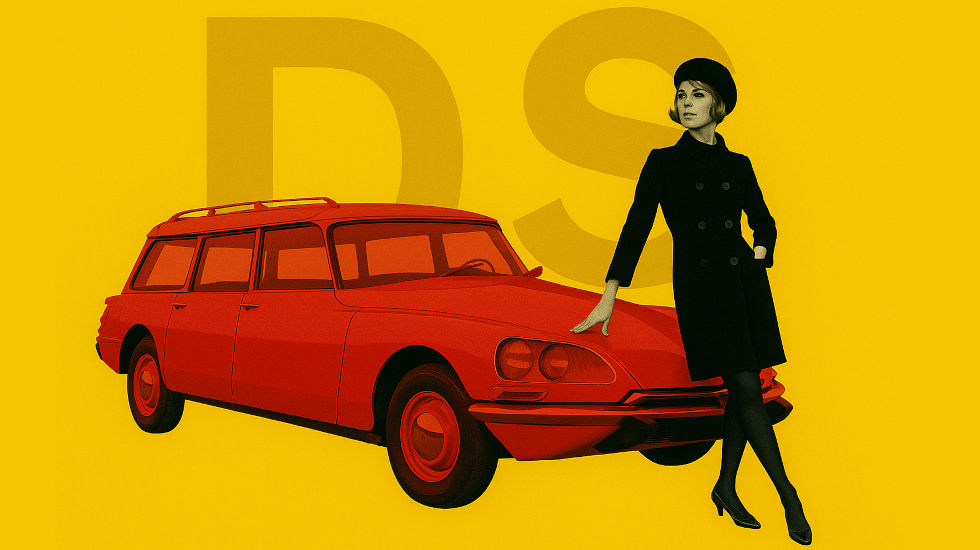
In 1968, Citroën stood at the intersection of art, innovation, and national identity. France was in flux — the May ’68 protests had shaken the country's establishment, yet its spirit of creativity and rebellion was alive in design, architecture, and technology. The Citroën DS, already a symbol of modern French engineering since its debut in 1955, became more than a car: it embodied progress, poise, and the elegance of controlled revolution. This brochure, the Gamme D series, distilled that moment in time — a fusion of optimism and sophistication rendered through pure visual language.
Citroën’s 1968 marketing captured the avant-garde aesthetic of post–Gaullist France, aligning the DS with modernism rather than mere motoring. The minimalist layout, vivid use of red and yellow, and refined typography reflected the same confidence found in contemporary Parisian graphic design and architecture. The Gamme D brochure didn’t simply sell a product; it sold an attitude — forward-looking, aerodynamic, and meticulously composed. Each page offered a glimpse into how Citroën viewed its vehicles not as machines, but as living works of industrial art.
To read this catalogue today is to understand why the DS remains one of the most revered designs of the 20th century. Its hydropneumatic suspension, swivelling headlights, and sculpted form are celebrated innovations, but it’s the presentation — calm, confident, almost cinematic — that endures. This article invites you to explore that original 1968 publication, where design met destiny, and Citroën declared that driving could be both a technical achievement and a cultural experience.
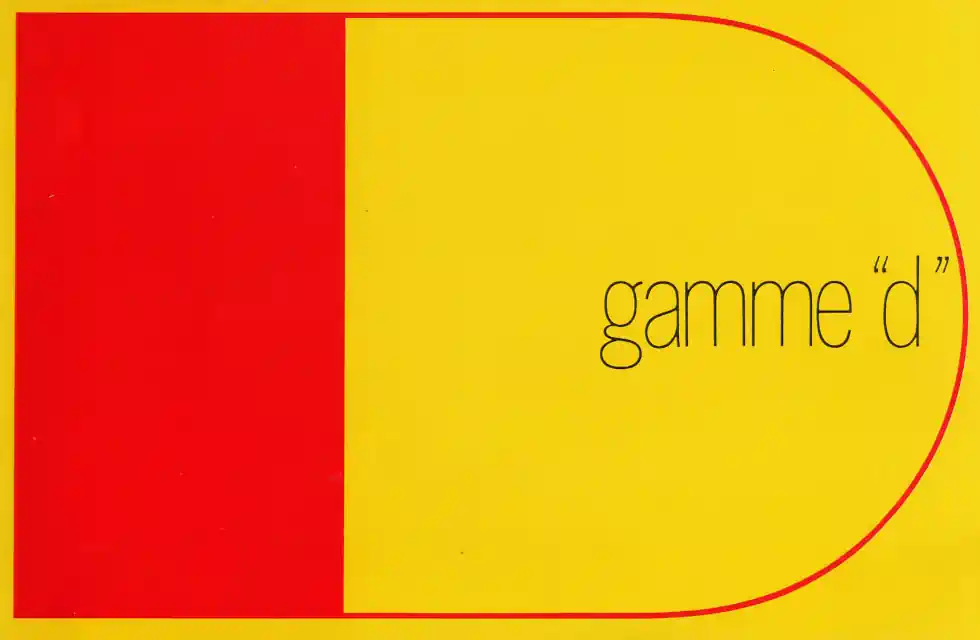
Gamme Dcatalogue cover design
The 1968 Citroën DS Gamme D
catalogue cover is a masterclass in minimalist French design, showcasing bold geometry and vibrant colour. The striking red block against a bright yellow field immediately evokes motion and confidence, framed by a clean red outline that curves into a soft aerodynamic form. It's a visual echo of the DS's futuristic styling. The delicate lowercase typography of gamme d
, set in a fine modernist font, balances the composition with quiet sophistication. This cover perfectly captures Citroën's late–1960s design ethos; bold innovation wrapped in effortless elegance.
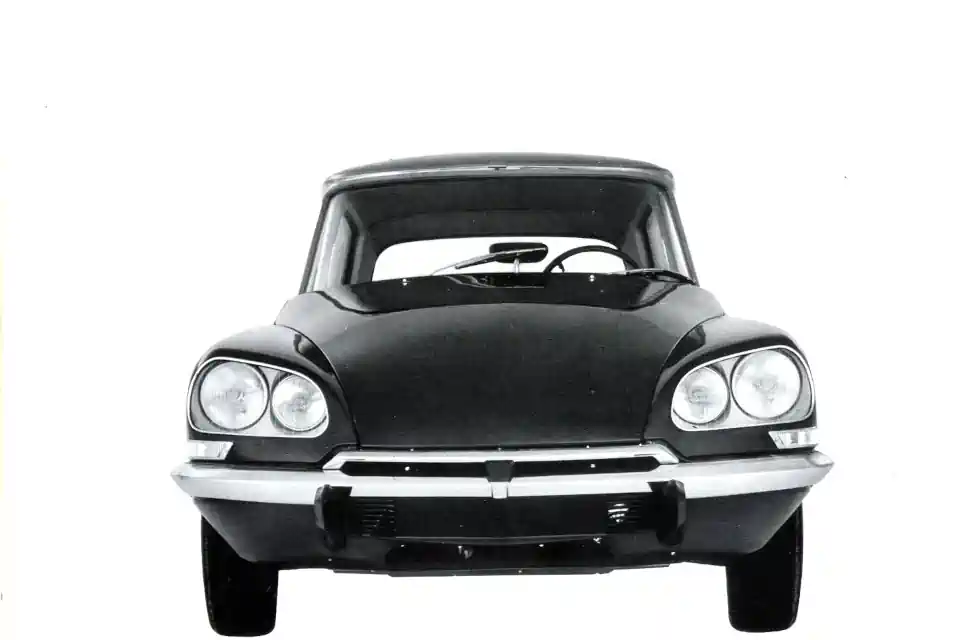
This front–facing image from the 1968 Citroën DS catalogue highlights the car’s unmistakable aerodynamic form and elegant symmetry. The DS's twin headlights, smoothly integrated into the curving wings, give it a futuristic gaze that was revolutionary for its time. The central bonnet ridge and chrome bumper underline Citroën’s precision in balancing function with artistry. Seen head–on, the DS embodies avant–garde engineering, is fluid, poised, and instantly recognisable as a symbol of French innovation in automotive design.
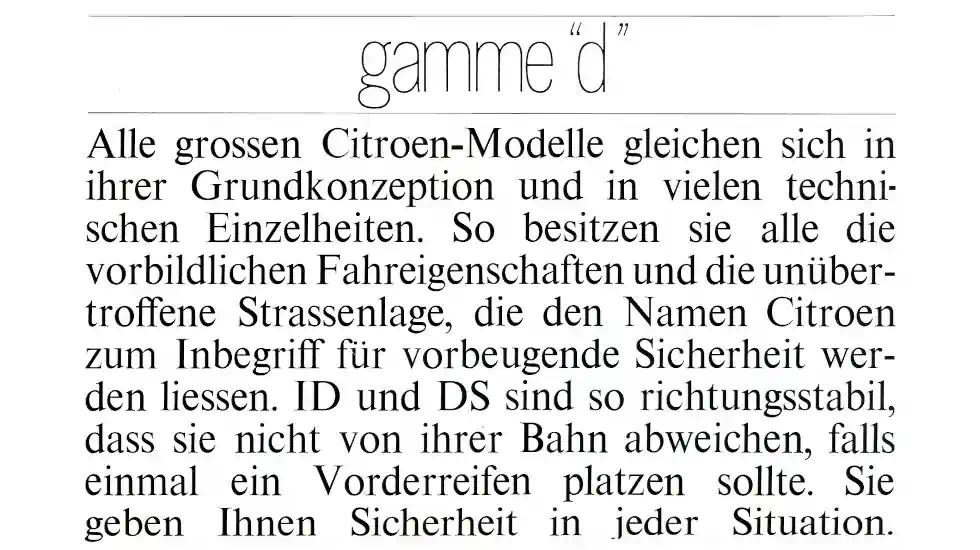


This page from the 1968 Citroën DS Gamme D
catalogue serves as both a technical overview and a declaration of design philosophy. It opens with a statement underscoring Citroën's consistency in concept and detail across its models. The text praises the DS and ID for their superior road–holding, hydropneumatic suspension, and directional stability. These were advertised as key features that made Citroën synonymous with proactive safety and effortless control, even under extreme conditions.
The lower section presents a structured breakdown of the DS's major systems, ranging from front-wheel drive and servo–assisted disc brakes to its hydropneumatic suspension and aerodynamic body design. Each short technical note reflects Citroën’s engineering precision: mechanical ingenuity translated into everyday reliability and comfort. This modular presentation mirrors the DS's reputation for innovation that is both sophisticated and accessible.
The final portion recounts the DS 19's historic debut in 1955, marking it as a turning point in automotive history. Citroën proudly describes how the DS set a new benchmark for comfort, speed, and safety, achieving what experts of the era deemed a decade ahead of its time. By 1968, the DS range embodied luxury and progress through models like the Pallas, preserving the spirit of avant-garde design and aerodynamic mastery that defined Citroën's golden age.
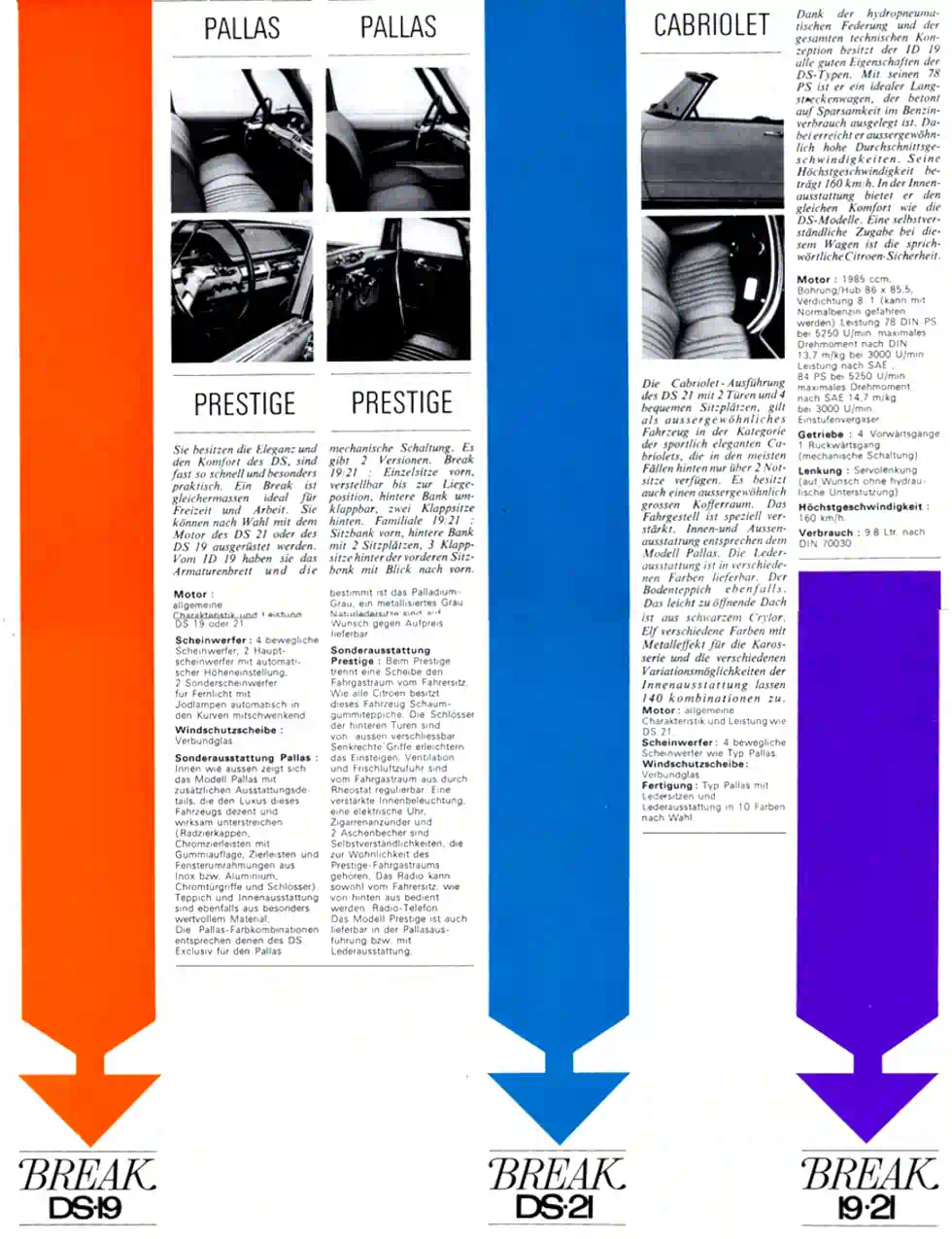
This vibrant page from the 1968 Citroën DS Gamme D
catalogue celebrates the sophistication and diversity of the DS lineup through bold use of colour and elegant layout. Each vertical arrow, orange, blue, and violet, anchors a distinct model: the DS19 Break Pallas, DS21 Break Prestige, and the DS21 Cabriolet. The design itself mirrors Citroën’s flair for modernist presentation, using clean geometry and vivid tones to convey the technological confidence and individuality of each model.
The Pallas and Prestige variants emphasise refinement and comfort, blending luxury with the practicality of Citroën's renowned Break (estate) body. Both versions feature supple seating, hydropneumatic suspension, and optional high–spec interior fittings, positioning the DS as both a driver's machine and a status symbol. The technical notes highlight options like servo–assisted brakes, advanced lighting, and meticulous soundproofing; hallmarks of Citroën's engineering excellence.
The Cabriolet model stands apart as a statement of elegance and freedom. Its open–top configuration, crafted in collaboration with Henri Chapron, transformed the DS into a grand touring icon, combining aerodynamic beauty with the brand's signature ride comfort. The text reinforces Citroën's message of versatility: whether for prestige, practicality, or pleasure, every DS variant exemplifies avant-garde design and a uniquely French interpretation of modern luxury.
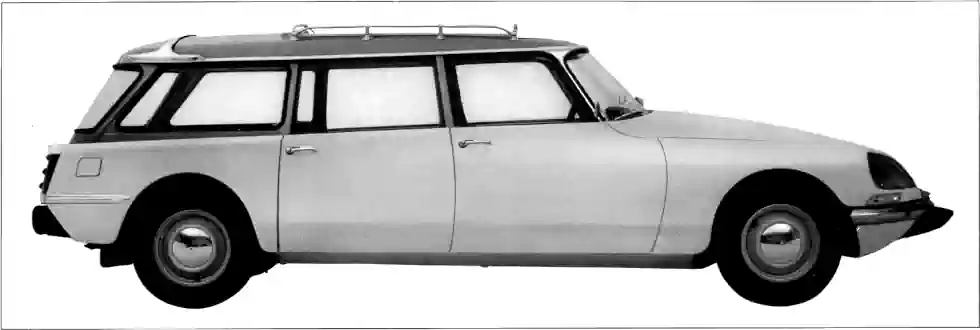
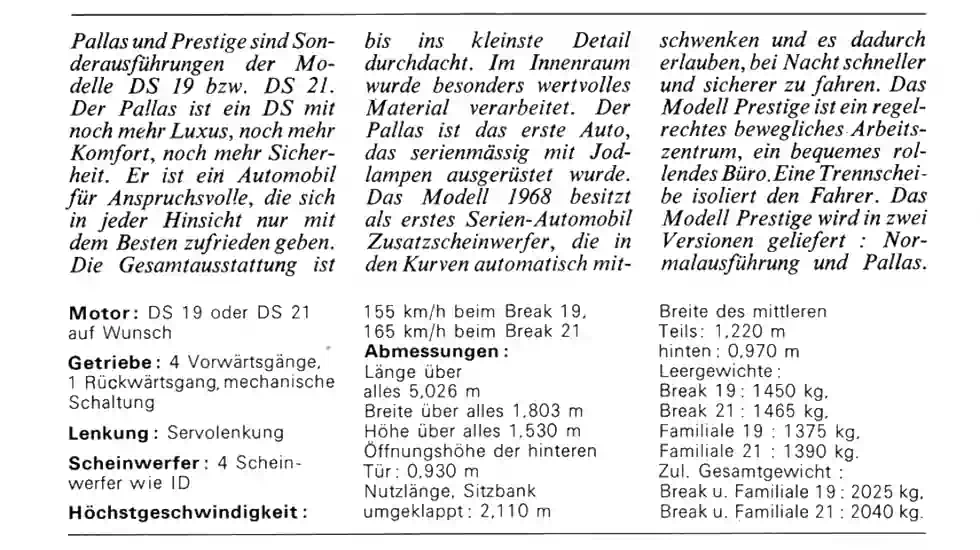
This page from the 1968 Citroën DS Gamme D
catalogue highlights the Break Pallas and Prestige variants — models that elevated Citroën’s famed DS line to new heights of refinement. The text describes the Pallas as a vehicle for the discerning driver, one who demands only the best in comfort, safety, and design. Every detail was engineered to perfection, from the use of high-quality interior materials to the advanced lighting system. Notably, the Pallas was the first production car equipped with automatic swivelling headlamps, improving safety and visibility when cornering at night.
Below the elegant side profile image of the DS Break, the specifications underline Citroën's technical precision. The model offered either a DS19 or DS21 engine with servo–assisted steering and a four-speed manual gearbox, achieving top speeds up to 165 km/h. The layout balances luxury with practicality — a versatile estate that doubles as a mobile workspace, particularly in the Prestige version, which featured a partitioned driver's compartment. Together, these models embody the DS philosophy: futuristic comfort and engineering artistry for the modern motorist.
References
- Citroën DS, Wikipedia, retrieved 2025-11-08.
- Citroën DS 1968, Internet Archive, retrieved 2025-11-08.
